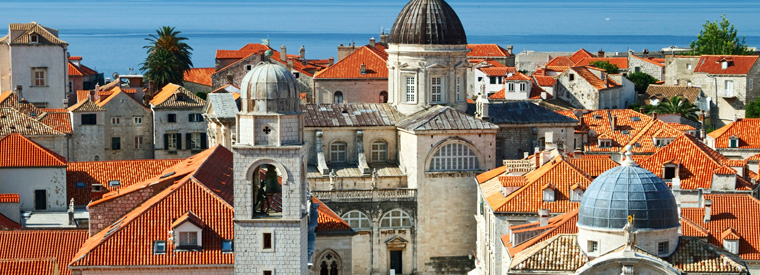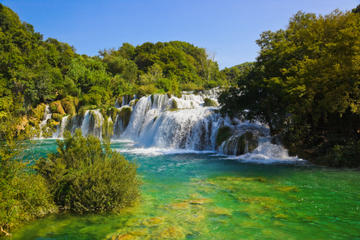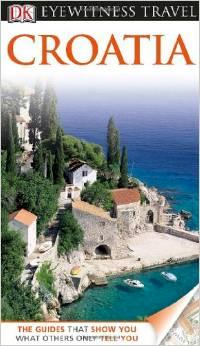« CROATIA • Discover Croatia
Discover magical Croatia

Despite the hype, Croatia's pleasures are more timeless than trendy. Crystalline water laps gently at a 1,778 km long coast and no less than 1,185 islands. Away from the coast, eight national parks protect pristine forests, karstic mountains, lakes and waterfalls in a landscape of primeval beauty.
A | B | C | D | E | F | G | H | I | J | K | L | M | N | O | P | Q | R | S | T | U | V | W | X | Y | Z
» Cathedral of St Dominus (Cathedral of St Duje)
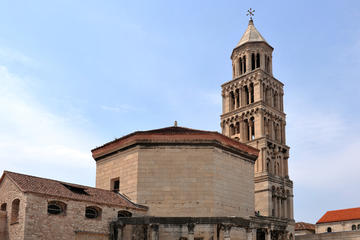
This Cathedral has two lives: its first life was as the Cathedral of St. Dominus, the mausoleum dedicated to Diocletian. Diocletian was known for his brutal persecution of Christians after a campaign to get rid of Christianity. Ironically, what Diocletian built to glorify his memory was used to remember his victims. His body was removed from the mausoleum in the 7th century, with no record of where his remains are now. Today, the cathedral is a popular meeting place because of its proximity to the Silver Gate at Diocletian's Palace …
» Cavtat
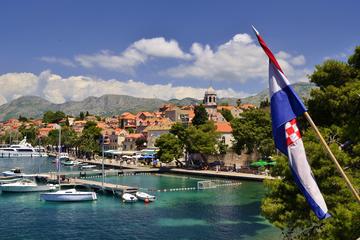
The origins of Cavtat stretch right back to ancient Greek times before it came under Roman rule in 228 BC. The area was then destroyed in the 7th century AD when its inhabitants fled to a nearby island and eventually founded the city of Dubrovnik. By the 15th century, a new settlement began growing here, and today Cavtat is a small seaside town tucked on a peninsula between two bays, with lush vegetation and plenty sandy beaches at Zal, just east of the town. Long the preserve of wealthy citizens of Dubrovnik who built their vacation retreats here …
» Cetina River
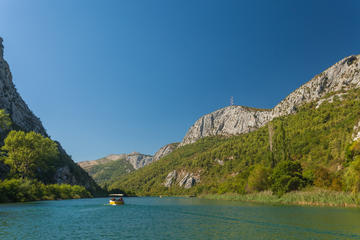
The Cetina River flows through 63 miles (101 km) of southern Croatia and drops down 1,260 feet (385 m) as it rushes down into the Adriatic Sea near Split. Over the centuries rapids have formed on the upper half of the river, and it is today fast-becoming a popular white-water rafting and canyoning destination for adrenaline junkies from all over Europe. Having its source somewhere under the mountains of Dinara and Gnjat, the Cetina wends its way through a spectacular limestone gorge, passing sites of archaeological importance far above in the high canyon …
» Church of St Blaise
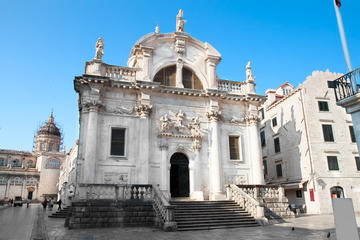
With its grand Baroque facade standing proud over Luza Square, the Church of St Blaise is one of the most beautiful buildings of Dubrovnik's Old Town. Originally built in the 14th century, the church was badly damaged in the 1667 earthquake and much of the present structure dates from its early 18th century reconstruction. Dedicated to the Dubrovnik's patron saint and protector, the domed church is the handiwork of Venetian architect Marino Gropelli and is built on the plan of a Greek cross …
» Diocletian's Palace
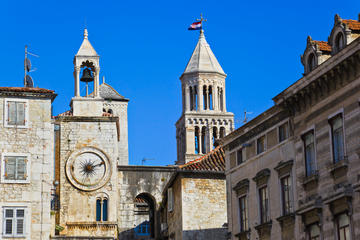
This palace right in the heart of Split, was used by Roman Emperor Diocletian and is one of the best preserved monuments of Roman architecture in the world. In 1979, it was declared -- with the historic city of Split -- a UNESCO World Heritage site. The ruins of the Palace can also be found throughout the city. A military fortress, imperial residence and fortified town, the palace covers over 31,000 square meters (334 square feet). Diocletian spared no expense in the building of the palace, importing marble from Italy and Greece, and columns and sphinxes from Egypt …
» Donji Grad (Lower Town)
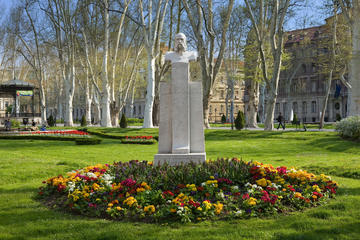
The modern center of Zagreb might not be as strikingly picturesque as its higher altitude neighbor, but Donji Grad, the 'Lower Town', is still the focal point of many visitors' itineraries, home to several of the capital's most prominent buildings and museums. The dramatic centerpiece of the Lower Town is Lenuci's Horseshoe (nicknamed the 'Green Horseshoe'), a series of eight adjoining parks and gardens that encircle the district's main public squares and form a scenic walking route around the principal sights …
» Dubrovnik's Ancient City Walls
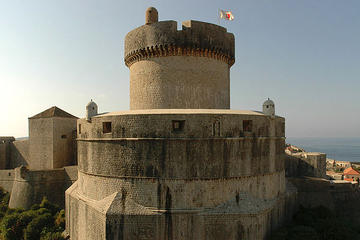
Dubrovnik's Old Town is completely surrounded by enormous stone walls that date back to the 10th century. Up to 6m (19ft) thick and 2.5m (8ft) high in places, Dubrovnik's Ancient City Walls were built to protect the city and deter would-be invaders. You can walk along the entire (2km/1.2mi) length of the ancient walls today and it is one of the best ways to appreciate the majesty of the Old Town (and get some great views over the Adriatic sea). There are 2 towers and 2 forts incorporated into the walls that were built and/or strengthened in the 15th century …
» Dubrovnik Cruise Port
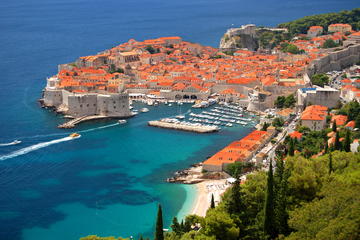
The Adriatic city of Dubrovnik, in southern Croatia, has one of Europe's most picturesque medieval districts, known for its red rooftops and even more famous today for being a filming location of the Game of Thrones TV series. A tour of film sites is even a Dubrovnik shore excursion. If you have already toured Dubrovnik's Old Town, other shore excursions include kayaking in the clear Adriatic Sea or checking out surrounding coastal towns like Cavtat. You'll dock in one of three places. The port in Gruz, a neighborhood about 2 miles (3 km) north of Old Town, is the most common …
» Dubrovnik Old Town
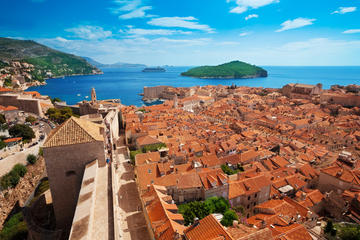
The medieval core of Dubrovnik and the focal point of most city itineraries, Dubrovnik's Old Town is a listed UNESCO World Heritage Site, made up of a warren of limestone-paved streets and painstakingly restored medieval architecture. The pedestrianized center is still surrounded by its 15th-century fortification walls and walking along the ramparts provides expansive views over the town. Navigating the labyrinth of the Old Town unveils many of the city's most impressive buildings, now flanked by an array of modern shops, restaurants and hotels …
» Elafiti Islands
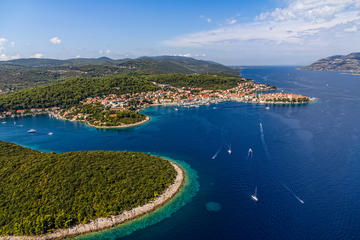
A cluster of isles and islands found along the Dalmatian Coast, the Elafiti Islands are one of Croatia's most popular destinations and make an easy day trip from nearby Dubrovnik. Fourteen islands make up the small archipelago, but only the largest three - Kolocep, Lopud and Sipan - are inhabited and linked by ferry and taxi-boat to the mainland, making them the focal point of island hopping tours. Despite their popularity among day-trippers, the trio of islands remain largely unaffected by the spoils of tourism, dotted with a mere handful of hotels and maintaining many car-free roads …
» Fort Lovrijenac
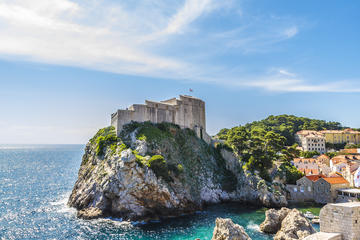
Perched on a 37-meter cliff top jutting out into the Adriatic Sea, it's easy to see how the dramatic Fort Lovrijenac earned itself the nicknamed of 'Dubrovnik's Gibraltar'. The mighty stone fortress is one of Dubrovnik's most recognizable landmarks, looming over the western gate to the walled Old Town and providing a striking backdrop to the annual Dubrovnik Summer Festival. Immortalized on-screen as part of the fictional King's Landing in HBO's hit fantasy drama, Game of Thrones, Fort Lovrijenac has further cemented its place at the top of tourist itineraries …
» Franciscan Monastery & Museum
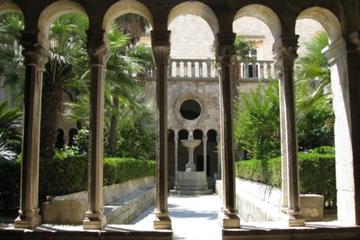
Originally built in a Romanesque-Gothic style in 1337, the Franciscan Monastery was one of the few buildings to retain some of its original architecture after the 1667 earthquake. Among its earliest surviving features is the south door, designed in 1499 in a Venetian Gothic style and featuring a beautiful carving (Pieta). Considered to be its piece de resistance, however, are the late Romanesque cloisters and their double columns topped with animal, human and plant carvings (capitals). Other original features include a 15th-century marble pulpit, bell tower and fountain …
» Gornji Grad (Upper Town)
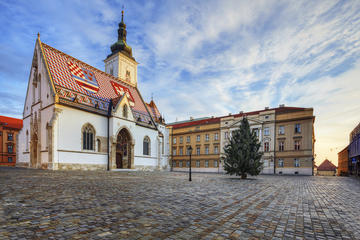
Encompassing the medieval hilltop settlements of Kaptol and Gradec, Zagreb's Gornji Grad (Upper Town) is the capital's historic district, looking down over the modern center of Donji Grad (Lower Town) below. Loosely defined as the area north of the central Bana Jelacica square, Gornji Grad's lattice of cobblestone streets, pretty medieval squares and lively cafe culture make it Zagreb's most picturesque neighborhood and visitors to the city will likely find themselves spending a large portion of their time here …
» Hvar
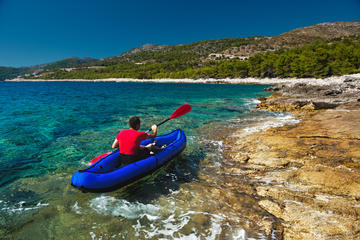
One of the most popular islands of the Dalmatian Coast, Hvar is proud of its reputation as the 'sunniest and greenest' of Croatia's many isles, with a wealth of natural attractions. Reachable by car-ferry from mainland Split or Makarska, Hvar's glitzy beach resorts and Mediterranean climate draw a steady stream of day-trippers and island-hoppers, who come to enjoy the stretches of sand and pebble beaches, scenic hiking and cycling trails, and lively culinary scene, noted for its local seafood. Hvar Town is the main tourist hub, a beautifully preserved medieval town …
» Konavle Valley
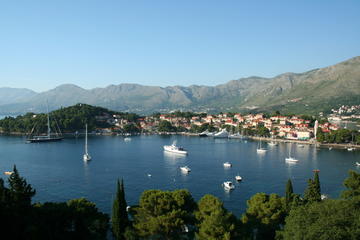
South of Dubrovnik, between the crystal clear waters of the Adriatic Sea and the dramatic Snijeznica mountain, lies the Konavle Valley. Coastal Cavtat at the northern end of the valley is the largest town and a popular holiday resort. That said, it retains its cultural and historic charm with wonderful buildings such as the Rector's Palace, Church of Our Lady Cavtat and the Franciscan Monastery. The valley stretches south to the Montenegrin border. Molunat is the southernmost point on the coast. The other 30 villages in the region are inland, including Cilipi near Dubrovnik airport …
» Korcula
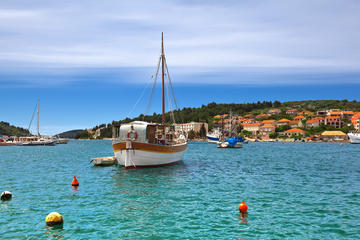
One of many alleged birthplaces of 13th-century explorer Marco Polo, the island of Korcula is one of the largest in the Adriatic and within easy striking distance Dubrovnik by road and sea. Perched on a peninsula and well on its way to becoming the party town of the Adriatic, Korcula Old Town is a mini version of Dubrovnik, with several ornate entry gates and fortified walls punctuated with defense towers built by the Venetians in the 13th century. Within the walls are fine old Gothic and Baroque churches to unearth among the photogenic tangle of alleyways that lead off the main square …
» Lokrum Island
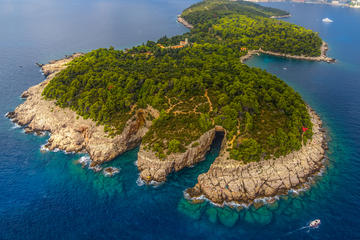
A mere 1km from Dubrovnik, the small island of Lokrum makes a welcome escape from the city and with regular boats making the 15-minute trip, it's an easy excursion from the mainland. Nicknamed the 'Island of Kings', legend has it that King Richard the Lionheart was shipwrecked on Lokrum Island following his 1192 crusades. Continuing its royal connections, the island was bought in 1859 by Maximilian von Habsburg, the Archduke of Austria, who transformed its 12th-century Benedictine abbey and monastery into a summer palace …
Page 1 • Page 2
« CROATIA • Discover Croatia


